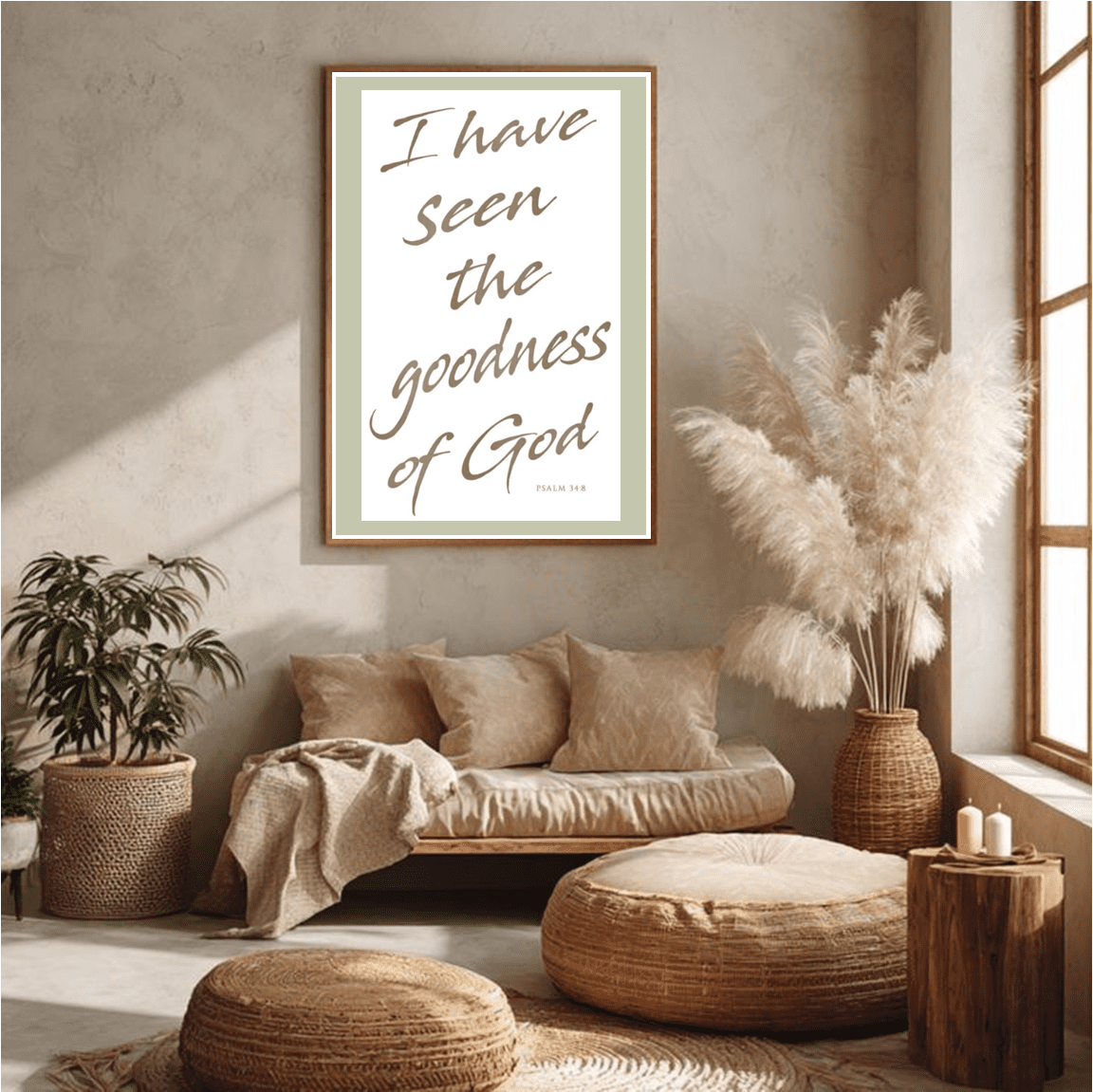
Have you ever longed for a quiet place where you could simply breathe, rest your mind, and reconnect with God?
A space that feels like a sanctuary for your soul, away from the noise and rush of daily life?
Designing a meditation room isn’t just about décor; it’s about creating an atmosphere that welcomes the Presence of God, one that invites peace, reflection, and renewal.
How to Design a Meditation Room
Choose the Right Location – Start with the location. Choose a room or a quiet corner of your home, somewhere away from the hum of daily activity. You want a space where the only sounds you hear are your breath and perhaps the gentle rustle of leaves outside your window or soft instrumental music.
Keep It Simple and Minimal – Think simplicity. A clutter-free environment calms the mind. Too much furniture or décor can distract rather than soothe. Keep it minimal, a mat, a chair, a soft cushion, a small table for your Bible, a candle (optional), or even a small plant.
This space doesn’t need to be large; it just needs to be intentional. You’re creating a room where your spirit can rest, reflect, and commune with God.
What Makes a Good Meditation Space?
A good meditation space feels like an embrace, calm, balanced, and full of light.
Let in Natural Light – Natural light is powerful. If possible, let soft daylight filter in through a window. It brings warmth and serenity, not brightness.
Allow for Fresh Air and Flow – Fresh air keeps your mind clear and your breathing steady. If you don’t have a large window, even a small opening or air-purifying plant (like a peace lily or fern) can make a big difference.
Add a Touch of Nature – Wooden textures, stones, or greenery can ground the space, reminding you of God’s creation. These natural elements carry quiet energy that restores the heart and settles the mind.
And remember, less is more. Keep the layout open and uncluttered so your focus can rest inward.
The Best Colors for a Meditation Room

Colors hold emotion. The tones you choose will directly affect how you feel during your quiet time.
Soft, neutral shades like beige, cream, or light grey help clear mental clutter.
Earthy tones, muted greens, gentle browns, or warm taupe, make the space feel rooted and secure.
Cool hues like pale blue or sage green encourage stillness and reflection, while white symbolizes purity and light.
Avoid overly stimulating colors such as red or bright yellow. They can raise energy rather than settle it.
You’re not creating a room that demands attention, you’re creating one that invites surrender.
The Best Flooring for a Meditation Room
The foundation of your space should feel comfortable, natural, and grounded. Wood or bamboo flooring works beautifully because of their organic warmth. They also pair well with soft area rugs or woven mats for added comfort.
If you prefer something cozier, add a meditation cushion or floor pillow. Natural fiber rugs, like jute, wool, or cotton, add texture without overwhelming the space. The goal is to make it feel inviting, whether you sit, kneel, or lie down in prayer.
Personal Touches That Inspire

No two meditation rooms will look alike, nor should they.
This is your sacred space, your reflection of where you are on your journey.
Include small items that hold meaning for you:
- A favorite verse framed on the wall
- A photo that reminds you of God’s faithfulness
- A soft throw that brings comfort during your quiet moments
- Gentle background music or white noise that soothes your spirit
Each piece should have purpose and peace.
Crafting the Perfect Atmosphere
Did you know that a well-designed meditation room engages all of your senses?
- Sight: soft colors and natural light
- Sound: calming music or silence
- Smell: a hint of lavender, sandalwood, or frankincense
- Touch: cozy fabrics, smooth stones, warm wood textures
- Spirit: a heart posture ready to listen, reflect, and receive
When these come together, you’ll find that atmosphere isn’t something you chase, it’s something you create.
Final Reflection
Creating your meditation room isn’t about perfection, it’s about presence. It’s about crafting a sacred corner that whispers,
“Be still and know that I am God.” — Psalm 46:10
When you step inside, let the world fade away.
Breathe. Reflect. Listen.
Because this is where your soul learns to rest, and where God’s peace becomes your daily rhythm.
How do you create space for God in your home? Share your thoughts or favorite design tip in the comments below!
To go deeper, 📚 Explore my devotionals, journals, and puzzle books at jbwintouch.com/books

Thanks